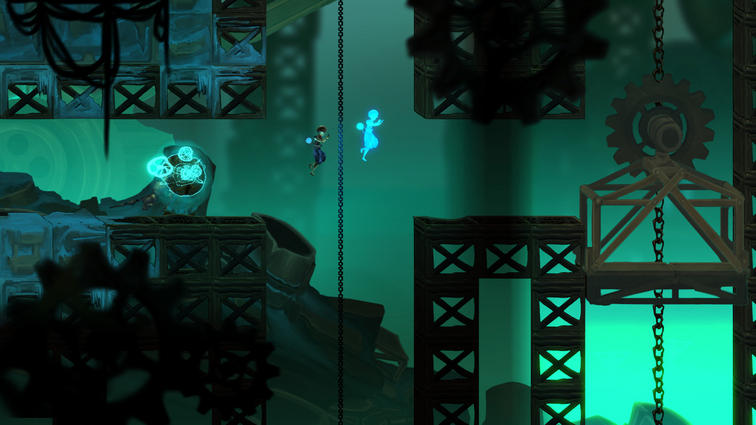
There’s something nice about puzzle games that offer up a series of discrete, independent challenges — games you can slowly work your way through, taking breaks when you’re having trouble and never feeling too rushed. “Clockwork,’’ developed by Gamesoft and released last week for Windows PCs, fits that satisfying niche perfectly.
“Clockwork’’ is a time-bending puzzle-platformer that tells the story of Atto, described as “a lonely mechanical boy.’’ It’s a sidescroller that takes place in the sprawling cyberpunk clockwork city of Watchtower — picture big gears and levers and pulleys everywhere. When the game starts, Atto interacts with a few other robots, but quickly things get lonely. Luckily, Atto has a sidekick, Milli, a glowing sprite-like girl who has apparently been trapped in Atto’s watch for 400 years (mechanical boys can live that long, obviously). In many levels, it feels like Atto and Milli are among the only sentient beings in Watchtower. There’s a lovely, austere feel to the game.
The game is simply a steady progression of numbered levels, most of which entail solving puzzles. Milli has a nifty time-bending mechanic that allows you to effectively create a temporary clone of yourself. You can, for instance, run over to a pressure plate that opens a distant door, step on it, and then hit a button to rewind time a little, plopping you back at this portal. Then you’ll see a copy of Atto running to the plate and activating it, allowing the “real’’ Atto to hightail it for the door his clone is opening. It’s a fun gimmick, though “Clockwork’’ isn’t the first game to use it.
In fact, playing “Clockwork’’ recalled other favorite platformers from the last five or 10 years. The game’s “one boy against a big, cruel world’’ feel reminded me of “Limbo.’’ Something about the music and some of the visuals reminded me of the wonderful “Ori and the Blind Forest.’’ The puzzles, particularly their time-bending elements, reminded me of “Braid.’’
I also enjoyed the interactions between Atto and Milli. Both are trying to feel out the other’s goals and motivations, and their dialogue did a good job of expressing this (even if it was annoying when the same snippets played over and over every time I retried a level).
Some small gripes: The controls aren’t as tight as they could be. I know that Atto is supposed to be a clunky mechanical boy, not an action hero, but controlling him still felt more awkward than necessary, and I would have preferred that he not walk so slowly. At times it felt like the game wasn’t forgiving enough in terms of the sizes of its “hitboxes’’ — that is, the game would register that I had died by making contact with fire or an enemy when it felt to me like I still had some room.
But “Clockwork’’ is a welcome addition to the flourishing subgenre of thoughtful, artsy sidescrollers. If you like puzzle games, it’s worth checking out.
Jesse Singal can be reached at jesse.r.singal@gmail.com.



